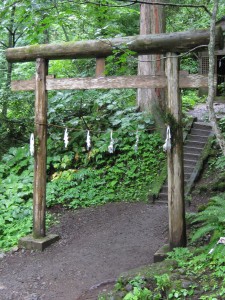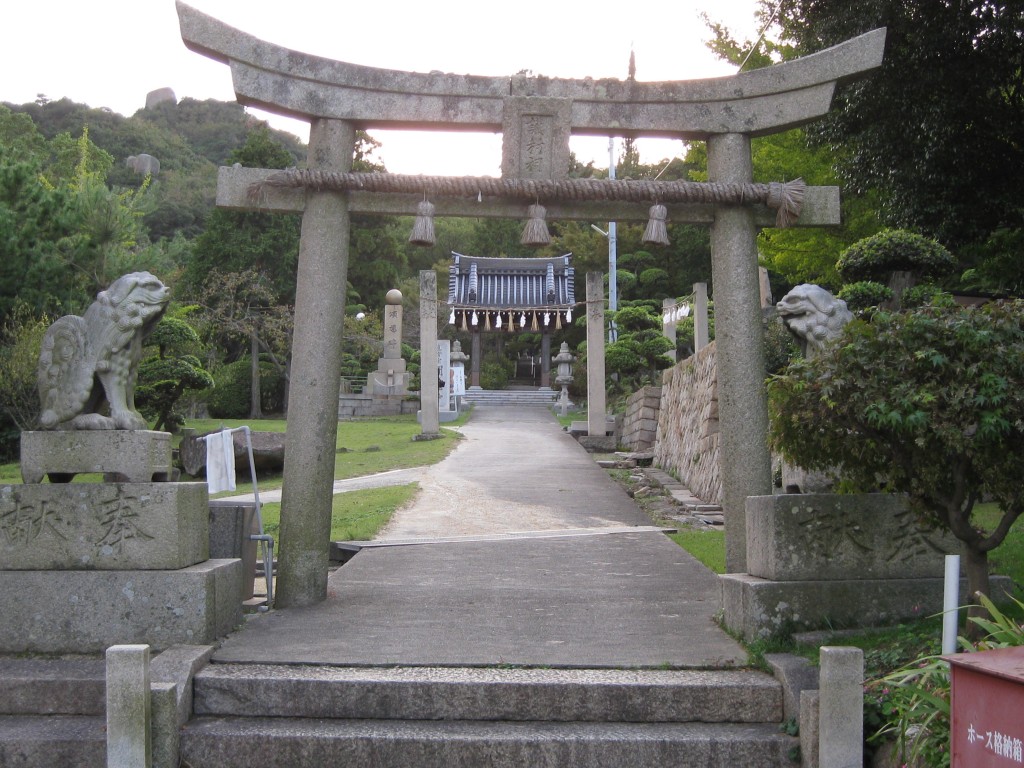In an article for the Daily Yomiuri, naturalist and anthropologist Kevin Short has written of the tutelary shrines in the Chiba countryside where he lives. These are based on attachment to place, and in ancient times they contrasted with the ujigami shrines which were based on clan and blood ties. (Ubu- means birth, so Ubusuna Shrines have to do with one’s birthplace.)
There were consequently two important types of kami: the ubusugami who presided over one’s brithplace, and the ujigami to whom one was attached by clan loyalties. With the passage of centuries such differences tended to fade away, and few nowadays make any distinction.
**************************************************************************************************************

The basic settlement pattern in these agricultural districts [in Chiba] is small, concentrated villages, usually called mura or shuraku. Typical mura consist of several dozen farmhouses clustered tightly together, sometimes in a thin line running along the edge of a narrow valley, and sometimes in a wider settlement on top of the high ground.
Each mura is a tight-knit social and cultural unit. A village association, or chonai-kai, is responsible for disseminating information throughout the households, and also for representing the opinion of the villagers when dealing with outside forces such as the municipal government.
Despite the intrusion of the immense residential complex into the area, the surrounding villages have for the most part managed to preserve their unity. As farmers, the villagers are held together by a core of shared interests and cultural values, which differ significantly from those of the people in the housing complex.
Another powerful force holding the community together is the spiritual element. Each individual mura is guarded by its own special Shinto shrine, called an ubusuna jinja, which houses a tutelary kami deity that watches over the interests of the villagers. As might be expected, the countryside landscape is packed with these small shrines.
Ubusuna shrines do not have a full-time priest or caretaker. Cleaning and maintenance is performed by villagers on a rotating basis, and priests are invited in to serve during festivals. The shrine buildings themselves are locked, but the grounds are not fenced or gated. Anyone can visit anytime day or night. At most times the shrine precincts are quiet and deserted, perfect for relaxing, thinking, practicing yoga, or doing whatever people do to calm and energize their spirits.
Ubusuna precincts often contain an assortment of smaller shrines and memorials dedicated to various local spirits… As an added bonus, almost all these shrines are surrounded by substantial sacred groves. These groves tend to be dominated by native evergreen broad-leaved species such as chinquapins and live oaks. One shrine in my area, however, features several immense Japanese torreya trees.
Torreya, sometimes called nutmeg-yew in English, are conifers usually classified in the Taxaceae or Yew Family (Ichii-ka in Japanese). There are a half dozen species known worldwide, including four in Asia and two in North America. The Japanese species, kaya (T. nucifera), grows from southern Tohoku through Shikoku and Kyushu. The favored habitat of these trees is mountain slopes, and they do not usually grow wild in the lowlands of the southern Kanto. When planted, however, they can easily reach 20 meters in height and two meters in diameter.


Leave a Reply